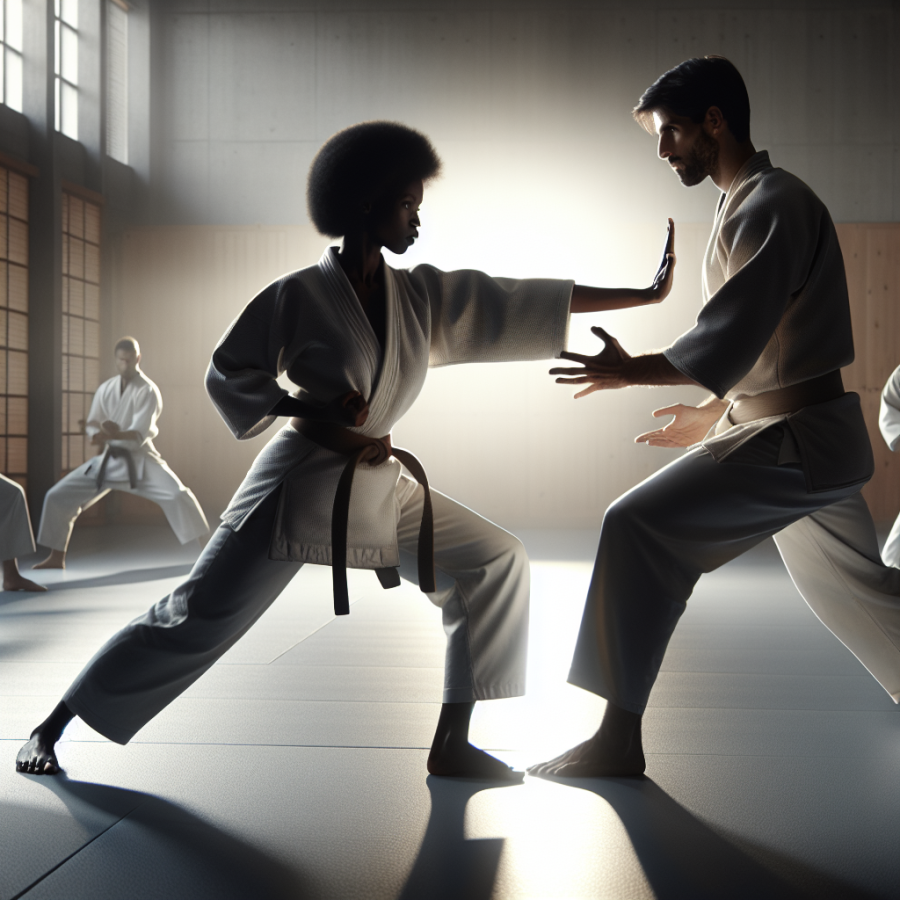Exploring the Historical Roots of Kenpō in Japan
Kenpō, a term often associated with various martial art styles, has deep historical roots that can be traced back to ancient Japan. The development of Kenpō represents a rich tapestry of influences, both indigenous and foreign, that have shaped its evolution over the centuries.
The origins of Kenpō can be found in the early forms of hand-to-hand combat practiced by the samurai, Japan's storied warrior class. These martial skills were essential for survival in the periods of feudal warfare and were systematically refined through rigorous training and battlefield experience. The samurai developed a comprehensive understanding of tactics, strikes, and grapples that would eventually contribute to the foundations of Kenpō.
With the influx of Chinese culture and philosophy during the Tang and Song dynasties, an exchange of martial knowledge also took place. Chinese Kenpō, known as Quanfa or Ch'uan-fa, was introduced to Japan through various channels, including traders, diplomats, and monks. This intercultural exchange led to the adaptation and incorporation of Chinese techniques into the existing Japanese martial practices, giving rise to a unique blend that retained core principles of both traditions.
The Japanese form of Kenpō began to take a more definite shape during the Kamakura and Muromachi periods, where the focus on martial skills intensified due to the constant state of civil conflict. It was during these tumultuous times that the concept of bujutsu—martial techniques for actual warfare—crystallized, and Kenpō was practiced not only for self-defense but as a means of refining the spirit and honing strategic thinking.
As Japan transitioned into more peaceful eras, such as the Edo period, Kenpō, along with other martial arts, experienced a transformation. With less emphasis on preparing for war, these practices started to embody more of the do or the "way" aspect, reflecting self-development, discipline, and ethical behavior. The samurai class, no longer engaging in constant combat, adopted Kenpō as a way to maintain their military prowess and preserve the warrior ethos.
During this time, various ryu, or schools, emerged, each with its own interpretation and style of Kenpō. These schools often guarded their techniques closely, and knowledge was passed down from master to student through rigorous training and oral tradition. Such practices ensured that Kenpō would have numerous lineages, each adapting to the changing needs and societal roles of its practitioners.
Read also:
Ice and Inline: The Thrills of Skating Sports
Kenpō Techniques and Training Philosophies: A Deep Dive Into the Discipline
Kenpō, an intricate and dynamic form of Japanese martial arts, blends fluid motion with precise strikes, embodying centuries-old fighting techniques and training philosophies steeped in tradition and practical application. This martial art form evolves continuously, showcasing the depth of its combat systems and the philosophies that underpin its teachings.
At the core of Kenpō techniques is the principle of rapid responses to an opponent's movements. Practitioners are taught to intercept incoming attacks and counter with a flurry of strikes, locks, and takedowns. The concept of "Ikken Hissatsu" — to finish with one blow — is a critical mantra in Kenpō that underscores the importance of effectiveness and efficiency in combat.
Within the realm of these techniques, practitioners are introduced to a diverse arsenal of movements, including punches, kicks, elbows, and knee strikes, as well as parries and blocks that serve both defensive and offensive purposes. Each technique is refined through an unyielding process of repetition, known as 'kata' practice. Katas are prearranged sequences of movements that simulate combat against multiple adversaries. By memorizing and perfecting these sequences, practitioners internalize the flow of Kenpō and develop muscle memory for quick and reactive movement.
Advanced Kenpō training further integrates tuite (grappling) and kyusho (vital point striking), enabling students to employ joint locks and to target specific areas that can incapacitate opponents with minimal effort. This approach to combat exemplifies another key training philosophy in Kenpō — using an opponent's strength and momentum against them, exemplifying the concept of 'ju yoku go o seisu' or 'gentleness controls hardness.'
Mental fortitude is a hallmark of Kenpō philosophies. Developing the 'mushin' mindset—a state of no-mindedness—allows practitioners to react instinctively and without hesitation in a fight. Training inculcates a calm demeanor, ensuring that the mind remains clear and ready to act even in the face of chaos. This mental discipline complements the physical skills honed in the dojo and is considered equally important.
Training in Kenpō often encapsulates the lessons of the 'Budo' spirit, embracing not just the techniques but also cultivating respect, honor, and perseverance. These guiding principles are not only applicable within the confines of the dojo but also extend into daily life, influencing interactions and personal conduct.




